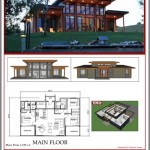How Do I Find the Original Floor Plans For My House?
Locating the original floor plans for a house can be an invaluable asset for homeowners. These plans provide a detailed blueprint of the property’s construction, outlining room dimensions, structural elements, plumbing, electrical systems, and other critical features. Accessing these plans can be instrumental for renovations, repairs, insurance claims, or simply understanding the history and layout of the home. However, the process of finding these documents can sometimes be challenging, requiring investigation and resourcefulness.
Several avenues exist for uncovering the original floor plans for a house. The success of each approach depends on factors like the age of the house, its location, and local record-keeping practices. A systematic and persistent approach will generally yield the most promising results.
1. Local Government Agencies
Local government agencies represent a primary source for obtaining historical records relating to properties. Building departments, planning departments, and assessor's offices often maintain archives of building permits, construction documents, and property records. These archives may contain the original floor plans submitted during the initial construction phase or any subsequent renovations that required permits.
The first step in this process involves contacting the relevant local government agencies. The specific departments to contact may vary depending on the municipality. A phone call or visit to the city hall or county courthouse can help determine which department manages building plans and permits. When contacting these agencies, it is essential to provide the property address, the age of the house (if known), and any other relevant information that can assist in locating the records.
Once contact is established, inquire about the procedure for accessing historical building plans. Some agencies may have online databases where records can be searched and viewed digitally. Others may require a formal request to be submitted, potentially involving a fee for record retrieval and copying. If the records are stored in physical archives, an appointment may be necessary to review them in person.
It is important to understand that not all properties will have floor plans readily available at the local government level. Older homes, particularly those constructed before stringent record-keeping practices were implemented, may not have comprehensive documentation on file. Additionally, records may have been lost or damaged over time due to fires, floods, or inadequate storage conditions.
Despite these potential limitations, exploring local government agencies remains a crucial step in the search for original floor plans. These agencies represent a centralized repository of property-related information and often provide the most direct route to accessing these documents.
2. Historical Societies and Archives
Historical societies and archives specialize in preserving and documenting the history of a specific locality. These institutions often possess a wealth of information about local buildings, neighborhoods, and communities, including architectural drawings, photographs, and historical records that may shed light on the original floor plans of a house.
Local historical societies are typically run by volunteers passionate about preserving local history. They may have access to records not readily available through government agencies, such as private collections, family papers, or architectural drawings donated by local firms or individuals. Archives, on the other hand, are often managed by professional archivists and historians and may contain more formal collections of historical documents, including building permits, maps, and blueprints.
To explore this avenue, identify the historical societies and archives located in the area where the house is situated. Conduct online searches or consult with local libraries to find contact information for these institutions. Once identified, reach out to them to inquire about their collections and whether they contain any information related to the property in question. Provide them with the address, age of the house, and any other relevant details that may aid in their search.
Many historical societies and archives have online catalogs or databases that can be searched remotely. These online resources may allow you to browse their collections and identify documents that could contain floor plans or related information. If an online search does not yield results, consider visiting the historical society or archive in person. This allows you to speak with the staff, access materials not available online, and potentially uncover hidden gems related to the property. Be prepared to pay fees for research time or copies of documents.
Historical societies and archives may not always have the exact floor plans of a house, but they can often provide valuable contextual information that helps piece together the history of the property. This information may include photographs of the house during its construction, historical maps showing the layout of the neighborhood, or architectural descriptions that provide clues about the original design. Such information, even if it doesn't include the floor plans themselves, can be helpful for understanding the evolution of the house over time.
3. Title Companies and Real Estate Records
Title companies and real estate records represent another potential source for uncovering original floor plans. When a property is sold or refinanced, title companies conduct a thorough search of public records to ensure clear ownership and identify any encumbrances on the property. This search often involves reviewing deeds, mortgages, surveys, and other documents related to the property's history. In some cases, these records may include floor plans or architectural diagrams that were filed as part of the transaction.
To explore this avenue, start by contacting the title company that handled the most recent sale or refinance of the property. The closing documents from these transactions should identify the title company involved. If the identity of the title company is unknown, consult with a real estate attorney or conduct a search of public records at the county recorder's office. Public records often include deeds and other documents that identify the title company involved in previous transactions.
Once the title company is identified, contact them and inquire about their records related to the property. Provide them with the address, the date of the transaction, and any other relevant information that may help them locate the records. Explain that you are looking for floor plans or architectural diagrams that may have been filed as part of the transaction. The title company may charge a fee for searching their records and providing copies of any documents they find.
In addition to title companies, real estate records at the county recorder's office may also contain floor plans or related information. These records typically include deeds, mortgages, liens, and other documents that affect the ownership or use of the property. While floor plans are not always included in these records, they may be found as attachments to deeds or other documents filed during construction or renovation projects.
To access real estate records at the county recorder's office, visit their website or contact them directly to inquire about their procedures. Many county recorder's offices have online databases that allow you to search and view records remotely. Others may require you to visit the office in person to review the records. Be prepared to pay fees for searching and copying documents.
It is important to note that not all real estate transactions will involve the filing of floor plans. Floor plans are more likely to be found in records related to new construction, major renovations, or commercial properties. However, it is still worth exploring this avenue, as even a partial floor plan or diagram can provide valuable insights into the original layout of the house.
4. Previous Owners and Neighbors
Contacting previous owners and neighbors can provide anecdotal evidence and potentially lead to physical copies of floor plans. Word of mouth can be a powerful tool in historical research. Previous owners may have retained copies of the original floor plans from when they purchased the house. Neighbors who have lived in the area for a long time might also have knowledge of the house's history and the location of architectural drawings.
To find previous owners, start by searching online directories or social media platforms. Public records, such as property tax records, may also provide information about previous owners. Once you have identified potential contacts, reach out to them via phone, email, or letter. Explain that you are researching the history of the house and are looking for the original floor plans. Inquire whether they have any knowledge of the house's architectural history or if they possess any copies of the floor plans. Be polite and respectful of their privacy, and be prepared to compensate them for their time and effort.
Neighbors who have lived in the area for a long time can also be valuable sources of information. They may have witnessed the construction of the house or have heard stories about its history from previous residents. They may also know of local architects or builders who may have worked on the house and have copies of the floor plans. To connect with long-term neighbors, consider attending neighborhood meetings, joining local online forums, or simply walking around the neighborhood and striking up conversations.
When contacting previous owners and neighbors, be prepared to provide them with information about yourself and your reasons for seeking the floor plans. Building trust and establishing a rapport can increase their willingness to share information. Be respectful of their time and privacy, and be prepared to compensate them for their assistance. Offer to share any information you uncover about the house's history with them, as they may find it interesting as well.
While contacting previous owners and neighbors may not always lead to the discovery of the original floor plans, it can provide valuable insights into the house's history and architectural features. It can also help you connect with other individuals who share an interest in the property and its past.
5. Architects and Builders
If the house was designed by a specific architect or built by a particular construction company, contacting these professionals or their descendants can be a fruitful avenue for finding the original floor plans. Architectural firms and construction companies often retain archives of their past projects, including drawings, specifications, and other documents related to the design and construction of buildings.
To pursue this approach, research the history of the house and try to identify the architect or builder involved in its original construction. Local historical societies, archives, and building departments may have information about the architects and builders who worked in the area during the time the house was built. Online searches and newspaper archives can also provide leads. Once you have identified potential candidates, contact them or their descendants to inquire about their records. If the original architect or builder is no longer in business, try to locate their successors or the firms that acquired their assets.
When contacting architects and builders, be prepared to provide them with detailed information about the house, including its address, age, style, and any known architectural features. Explain that you are looking for the original floor plans and describe your reasons for needing them. Be polite and respectful of their time, and be prepared to compensate them for their efforts in searching their archives. Architectural firms and construction companies may charge a fee for record retrieval and copying.
Even if the original architect or builder is no longer available, their descendants or former employees may still have access to their records. Consider contacting local architectural societies or construction trade associations to inquire about former members who may have worked on the house. These organizations may be able to provide you with contact information or assist you in your search.
Finding the original architect or builder and accessing their records can be a challenging task, but it can be well worth the effort if it leads to the discovery of the floor plans. Architects and builders are often the most knowledgeable sources about the design and construction of a house, and their records can provide invaluable insights into its architectural history.
The quest to find original floor plans often requires dedication, persistence, and a multi-faceted approach. By exploring local government agencies, historical societies, title companies, contacting previous owners, and researching architects and builders, homeowners can significantly increase their chances of uncovering these valuable documents.

9 Ways To Find Floor Plans Of An Existing House Blueprints Archid

9 Ways To Find Floor Plans Of An Existing House Blueprints Archid

How To Find The Original Floor Plans For Your House

How To Get Blueprints Of Your House

How To Get Blueprints Of My House Free Computer Repair Ticktocktech

How To Find Building Plans For My House Architecture Design Plan

9 Ways To Find Floor Plans Of An Existing House Blueprints Archid

Cur And Future House Floor Plans But I Could Use Your Input Addicted 2 Decorating

How To Read A Floor Plan And Design The Perfect Home For You

Réalisez Les Plans De La Maison Vos Rêves
Related Posts








